The Ultimate Ergonomic Chair Guide: Find Your Perfect Fit
Choosing the right ergonomic chair is one of the most important investments you can make for your health, comfort, and productivity. But with so many options on the market, from budget-friendly basics to high-end marvels of engineering, it can be overwhelming to know where to start. This comprehensive guide will walk you through everything you need to know to choose the perfect ergonomic chair for your needs, your body, and your budget. At LiveWithValue, we’re all about finding true long-term value, and that’s exactly what we’ll help you do here.
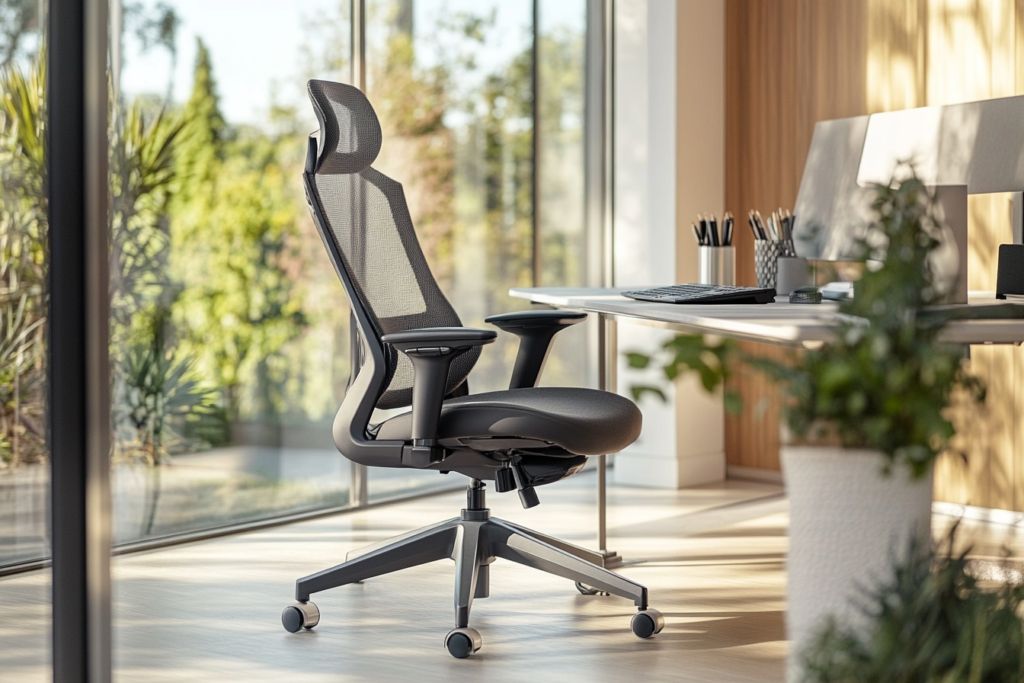
What is an Ergonomic Chair (and Why Does it Matter)?
An “ergonomic” chair isn’t just a marketing buzzword. It’s a chair that’s specifically designed to support your body’s natural posture and movement, reducing strain and promoting comfort during extended periods of sitting. A truly ergonomic chair is highly adjustable, allowing you to customize it to your individual needs.
Why does this matter? Because the average person spends a staggering 1,700+ hours sitting per year in their work chair alone—that’s over 70 days! And poor sitting posture can lead to:
- Back pain
- Neck pain
- Shoulder pain
- Carpal tunnel syndrome
- Reduced circulation
- Fatigue
- Decreased productivity
- Higher healthcare costs over time
According to a study published in the Journal of Physical Therapy Science, proper ergonomic seating can reduce musculoskeletal symptoms by up to 40% and increase productivity by 17.5%. A good ergonomic chair isn’t just a comfort upgrade—it’s a strategic investment in your health, wellbeing, and work performance.

Types of Ergonomic Chairs: Finding the Right Style for You
Ergonomic chairs come in a variety of styles, each with its own advantages and disadvantages. Understanding these differences is key to finding your perfect match:
Task Chairs
What They Are: The most common type of office chair, designed for everyday desk work.
Key Features:
- Medium-height backrest (typically mid to upper back)
- Variety of adjustment options
- Focus on supporting natural posture during computer work
- Usually more affordable than specialized options
Best For: General office work, standard 8-hour workdays, and users without specific health concerns.
Potential Drawbacks: May lack specialized features for specific needs; typically less padded than executive options.
Executive Chairs
What They Are: Larger, more substantial chairs traditionally associated with management positions.
Key Features:
- Taller backrest (often including headrest)
- More generous padding and cushioning
- Often upholstered in premium materials (leather, high-grade fabric)
- Wider seat and backrest dimensions
Best For: Those who prioritize comfort and status; users who prefer more substantial padding.
Potential Drawbacks: Sometimes sacrifice adjustability for appearance; can be bulky and heavy; often higher cost for mainly aesthetic improvements.
Ergonomic Stools
What They Are: Alternative seating options that promote active sitting and core engagement.
Key Features:
- No backrest (or minimal support)
- Often have tilting or wobbling mechanisms
- Promote constant small movements and core activation
- Usually adjustable height
Best For: Rehabilitation settings, those looking to improve core strength, alternating with traditional chairs, standing desk users.
Potential Drawbacks: Not suitable for full-day use for most people; limited support for those with back issues; learning curve for proper use.
Kneeling Chairs
What They Are: Chairs that position the user in a modified kneeling posture, distributing weight between the buttocks and knees.
Key Features:
- Forward-tilted seat
- Knee/shin supports
- Open hip angle that promotes natural spine alignment
- Simple design with limited adjustability
Best For: Users with lower back pain who benefit from an open hip angle; those who want to improve posture; short-duration tasks.
Potential Drawbacks: Not suitable for all-day use; limited adjustability; difficult transitions in and out; not ideal for taller users.
Saddle Chairs
What They Are: Stool-style chairs with a seat shaped like a horse saddle.
Key Features:
- Saddle-shaped seat that positions hips in a more open angle
- Usually backless or with minimal back support
- Higher sitting position than conventional chairs
- Often used in medical/dental settings
Best For: Users who need to frequently move around their workspace; those who benefit from improved hip positioning.
Potential Drawbacks: Not comfortable for all body types; significant adjustment period; limited back support; not ideal for prolonged periods.
Balance Ball Chairs
What They Are: Stability ball mounted on a frame, sometimes with a backrest.
Key Features:
- Stability ball as the seat
- Promotes micro-movements and active sitting
- Usually inexpensive compared to traditional ergonomic chairs
- Some models include a minimal backrest
Best For: Users who want to engage core muscles; those who benefit from constant small movements; supplement to a traditional chair.
Potential Drawbacks: Limited adjustability; minimal support; durability concerns; not suitable as a primary full-time chair.
The best type of chair for you will depend on your individual needs, preferences, work style, and any specific health concerns you may have. Many users benefit from alternating between different seating options throughout the day.
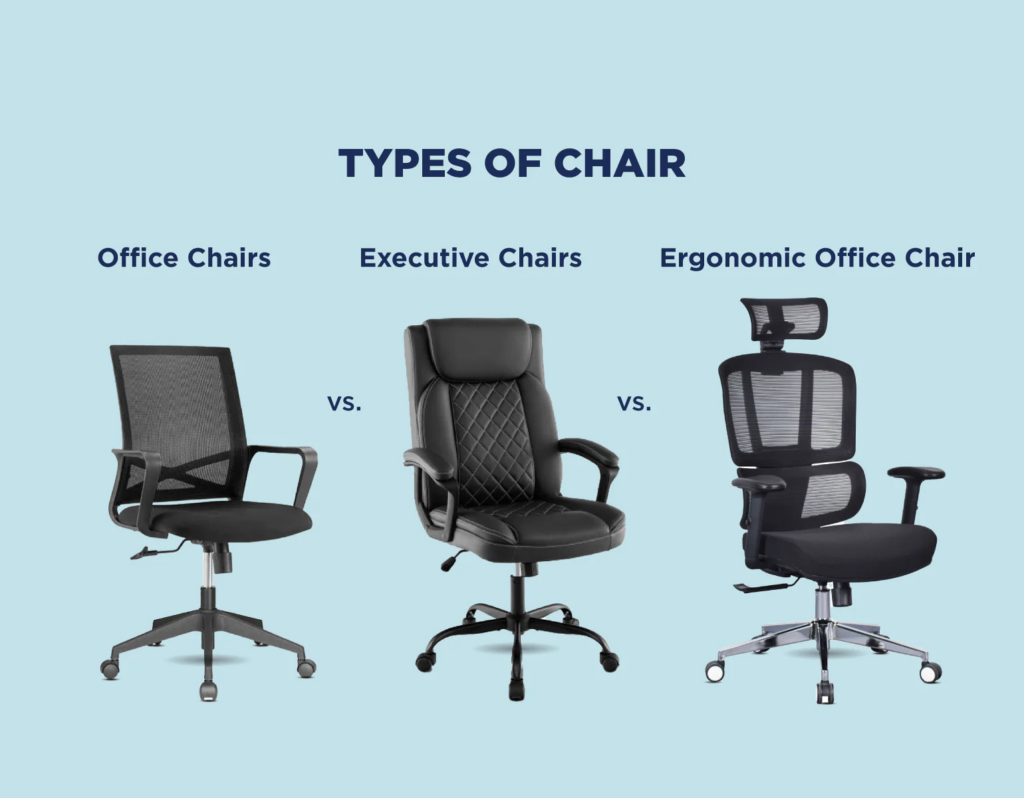
Key Features to Look for in an Ergonomic Chair
When choosing an ergonomic chair, pay close attention to these key features that significantly impact comfort, support, and long-term value:
Lumbar Support: The Foundation of Spinal Health
What It Is: Lumbar support refers to the feature that supports the natural inward curve of your lower back.
Why It Matters: Proper lumbar support maintains the natural curve of your spine, preventing slouching and the associated strain on spinal discs, muscles, and ligaments. Research shows that chairs with adjustable lumbar support can reduce lower back pain by up to 33% in office workers.
What to Look For:
- Adjustable Height: The lumbar support should align with the natural curve of your lower back (typically 6-10 inches above the seat).
- Adjustable Depth/Firmness: The ability to increase or decrease pressure provides customized support.
- Dynamic Support: Some premium chairs offer lumbar support that adapts to your movements throughout the day.
Value Consideration: Investing in proper lumbar support can prevent costly back pain treatments later. The average direct cost of treating chronic back pain can exceed $6,000 annually1 per patient—far more than the price difference between a basic chair and one with proper support.
Seat Height Adjustability: Foundational Positioning
What It Is: The ability to raise or lower the seat to accommodate different user heights and desk configurations.
Why It Matters: Proper seat height ensures your feet rest flat on the floor while your knees maintain a 90-degree angle, preventing pressure on the thighs and promoting healthy circulation.
What to Look For:
- Range: Typically 16-21 inches from the floor, though taller or shorter users may need extended ranges.
- Smooth Adjustment Mechanism: Pneumatic adjustment is standard and allows for easy modifications.
- Locking Mechanism: Ensures the chair stays at your preferred height.
Seat Depth Adjustment: Critical for Different Body Types
What It Is: The ability to adjust the distance between the front edge of the seat and the backrest.
Why It Matters: Proper seat depth ensures your back is fully supported while maintaining 2-4 inches of space between the back of your knees and the seat edge, preventing pressure on the legs and allowing proper blood circulation.
What to Look For:
- Adjustable Range: At least 2 inches of adjustability.
- Easy-to-Use Mechanism: Should be adjustable while seated.
- Waterfall Edge: A downward-sloping front edge reduces pressure on the thighs.
Armrest Adjustability: Supporting Upper Body Alignment
What It Is: The ability to modify armrest height, width, depth, and angle.
Why It Matters: Properly positioned armrests reduce strain on the shoulders, neck, and upper back by supporting the weight of your arms (approximately 10% of total body weight).
What to Look For:
- Height Adjustment: Armrests should allow your shoulders to remain in a relaxed position.
- Width Adjustment: Ability to position armrests directly under shoulders.
- Depth Adjustment: Allows proper support regardless of how close you sit to your desk.
- Pivot Adjustment: Accommodates different arm positions during various tasks.
- Material: Soft, non-abrasive surfaces that remain comfortable during extended contact.
Backrest Recline and Tilt: Promoting Movement
What It Is: The chair’s ability to recline backward and/or tilt forward, along with tension control for these movements.
Why It Matters: Research shows that regularly changing positions reduces spinal pressure and muscle fatigue. A dynamic chair that moves with you encourages these beneficial position changes.
What to Look For:
- Recline Range: At least 10-15 degrees of backward recline.
- Tilt Lock: Ability to lock the backrest at different angles.
- Tension Control: Adjustable resistance when reclining.
- Forward Tilt: Premium chairs offer the ability to angle the seat slightly forward for certain tasks.
- Synchronous Tilt: Seat and backrest move in a coordinated manner that maintains ergonomic relationships.
Material and Breathability: Comfort for Extended Use
What It Is: The fabrics, meshes, foams, and other materials that make up the chair’s contact surfaces.
Why It Matters: Chair materials affect temperature regulation, pressure distribution, durability, and aesthetics. Poor-quality materials lead to premature breakdown and decreased comfort over time.
What to Look For:
- Breathable Fabrics/Mesh: Allows airflow to prevent heat buildup during long sitting sessions.
- High-Density Foam: In padded chairs, look for foam that will retain its shape and support over time.
- Durable Upholstery: Fabrics rated for heavy commercial use (100,000+ rubs in the Martindale abrasion test).
- Easy Cleaning: Stain-resistant materials extend the chair’s aesthetic lifespan.
Swivel Base and Mobility: Functional Freedom
What It Is: The chair’s ability to rotate 360 degrees and move smoothly across the floor.
Why It Matters: Easy movement reduces strain from reaching and twisting, allowing quick access to different areas of your workspace.
What to Look For:
- Smooth 360° Rotation: Should turn effortlessly without sticking.
- 5-Point Base: Provides maximum stability (avoid chairs with fewer points of contact).
- Appropriate Casters: Hard casters for carpeted floors, soft casters for hard surfaces.
- Caster Quality: Look for robust construction that won’t break or seize up over time.
Durability and Construction: Long-Term Investment Protection
What It Is: The overall quality of materials, mechanisms, and assembly that determine how long the chair will maintain its function and appearance.
Why It Matters: A truly valuable chair will maintain its performance and appearance for many years, amortizing the initial investment over a longer period.
What to Look For:
- Frame Material: Aluminum, steel, or high-grade reinforced nylon for maximum durability.
- Mechanism Quality: Smooth operation with minimal plastic components in adjustment mechanisms.
- Weight Capacity: Should exceed your weight by at least 30% for long-term stability.
- Warranty Length: Premium chairs typically offer 10-15 year warranties, reflecting manufacturer confidence.
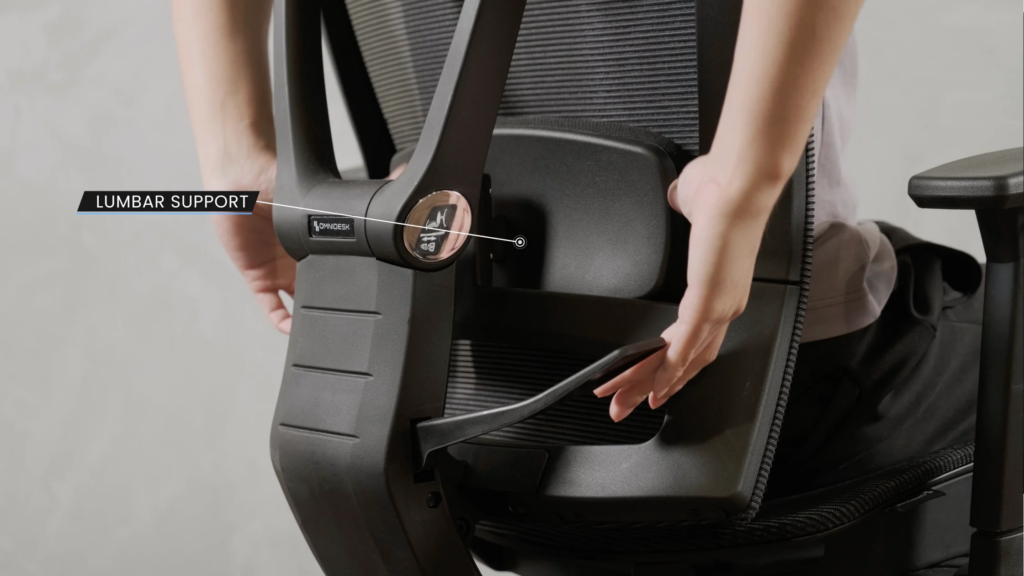
Ergonomics 101: Setting Up Your Workspace
Even the best ergonomic chair won’t deliver optimal results if your overall workspace isn’t properly configured. Creating an ergonomic environment requires attention to several key elements:
Chair Positioning and Adjustment
- Set Your Chair Height: Your feet should rest flat on the floor with knees at approximately 90 degrees. If needed, use a footrest to achieve proper positioning.
- Adjust Your Lumbar Support: The curved part of the backrest should fit into the natural curve of your lower back, typically 6-10 inches above the seat.
- Set Armrest Height: With shoulders relaxed, your forearms should rest comfortably on the armrests with elbows at approximately 90 degrees.
- Adjust Seat Depth: With your back against the backrest, you should have 2-4 fingers’ width of space between the front edge of the seat and the back of your knees.
- Set Backrest Recline: Generally, a slight recline of 100-110 degrees reduces spinal pressure compared to sitting perfectly upright.
Desk Setup Coordination
- Desk Height: Your work surface should allow for proper arm positioning—typically at or slightly below elbow height when seated.
- Monitor Positioning: The top of your screen should be at or slightly below eye level, and approximately an arm’s length away.
- Keyboard and Mouse Placement: These should be positioned to maintain neutral wrist positions, typically at or slightly below elbow height.
- Document Positioning: Use a document holder positioned near your screen to reduce neck twisting and awkward postures.
Movement and Variation
- Change Positions Frequently: Even with perfect ergonomics, static postures increase fatigue. Aim to change your position every 30-45 minutes.
- Take Microbreaks: Brief 30-60 second stretches or movements every hour can significantly reduce fatigue.
- Consider a Sit-Stand Solution: Alternating between sitting and standing throughout the day provides variation and different muscle engagement.
- The 20-20-20 Rule: Every 20 minutes, look at something 20 feet away for at least 20 seconds to reduce eye strain and encourage slight position shifts.
Environmental Factors
- Lighting: Position light sources to avoid screen glare and harsh shadows.
- Temperature: Maintain a comfortable temperature (typically 70-73°F or 21-23°C) for optimal comfort and focus.
- Noise Control: Minimize distracting noise through room arrangement, sound-absorbing materials, or appropriate use of background sounds.
- Air Quality: Ensure adequate ventilation and consider adding plants to improve air quality in your workspace.
Remember that ergonomics is about creating a dynamic, comfortable environment that works with your body’s natural design—not forcing yourself into a rigid “perfect posture” that cannot be maintained.

Choosing the Right Chair: Important Considerations
Budget Considerations: How Much Should You Spend?
Ergonomic chairs range widely in price, from under $200 to over $2000. It’s important to set a realistic budget before you start shopping. Consider what you can comfortably afford, but also keep in mind the long-term value proposition. A more expensive chair might be a better investment if it lasts longer and provides better support.
The True Cost Calculation
When evaluating chair prices, consider these factors to understand the true long-term cost:
- Cost Per Year of Use: A $1,200 chair with a 12-year warranty costs $100 per year. A $300 chair that lasts 3 years costs the same annually but requires the hassle of more frequent replacements.
- Maintenance Costs: Higher quality chairs typically require less maintenance and have better warranty coverage for parts that do wear out.
- Health Costs: Poor ergonomics can contribute to musculoskeletal disorders that may result in healthcare expenses, pain management costs, and lost productivity.
- Productivity Impact: Even a 5% increase in productivity from improved comfort and reduced pain can translate to significant value over time.
Price Range Guidelines:
- Under $250 (Budget): Basic functionality, limited adjustability, may not be suitable for all-day use. See our Amazon Basics Office Chair Review for an example.
- $250 — $700 (Mid-Range): A good range for finding a balance of features, comfort, and value. See our Oline ErgoPro Review and SIHOO Ergonomic Office Chair Review.
- $700+ (Premium): High-end chairs with advanced ergonomics, premium materials, and long warranties. See our Herman Miller Aeron Review and Steelcase Gesture Review.
Remember, the best chair for you is the one that fits your budget, your body, and your work style. It is a worthwhile long-term investment in your health and productivity.
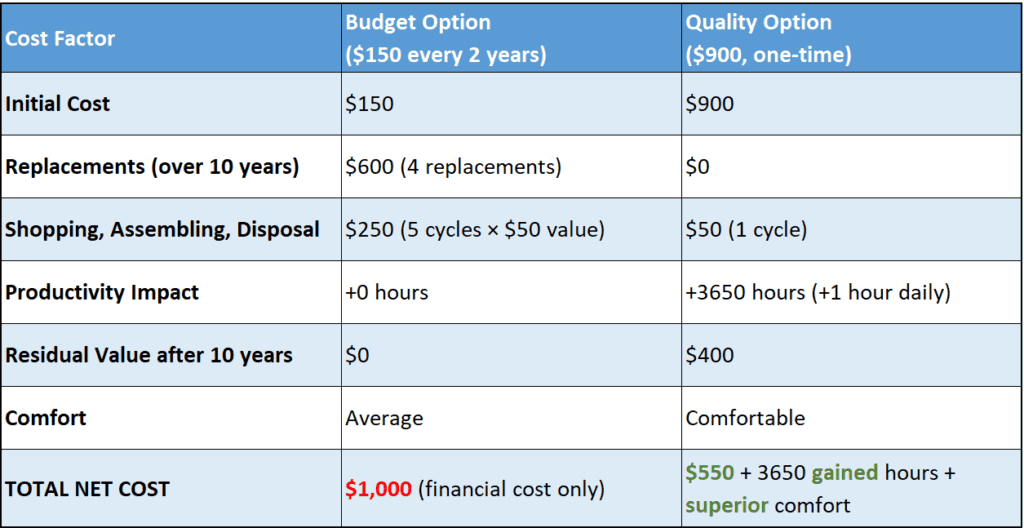
Body Type and Size
Not all chairs are created equal, and a chair that’s perfect for one person might be completely wrong for another. Ergonomic chairs are designed to support different body types and sizes, and choosing the right fit is crucial for comfort and long-term health. Pay close attention to these key specifications:
- Seat Width: The seat should be wide enough to accommodate your hips comfortably, without being so wide that you have to reach for the armrests. Measure your hip width and compare it to the chair’s specifications.
- Seat Depth: This is the distance from the front edge of the seat to the backrest. When you’re sitting correctly (with your back against the backrest), there should be 2-4 inches of space between the back of your knees and the front edge of the seat. If the seat is too deep, it can cut off circulation to your legs. If it’s too shallow, you won’t have enough thigh support. Many ergonomic chairs offer adjustable seat depth.
- Backrest Height: The backrest should be high enough to support your entire back, including your shoulders. Some chairs have adjustable backrest height.
- Weight Capacity: Make sure the chair’s weight capacity is appropriate for your body weight. Exceeding the weight capacity can compromise the chair’s stability and durability.
Specific Considerations:
- Petite Users (Generally Under 5’4″): Look for chairs with a smaller seat depth and a lower seat height range. Some chairs are specifically designed for petite users.
- Tall Users (Generally Over 6′): Look for chairs with a taller backrest, a deeper seat, and a higher seat height range. Some chairs offer “tall” or “extra tall” versions.
- Big & Tall Users: Look for chairs with a wider seat, a higher weight capacity, and reinforced construction. These chairs are specifically designed to provide support and durability for larger individuals.
The Herman Miller Aeron, for example, offers a good illustration. It comes in three sizes (A, B, and C) to accommodate different body types. See our review for the details! It’s always best to try out a chair in person if possible, but if you’re buying online, carefully review the chair’s specifications and read reviews from users with similar body types.

Work Style and Usage
How you work will significantly influence your chair choice. Different work patterns create different demands on your seating solution. Consider these common work profiles:
Focus-Intensive Workers
Characteristics: Long periods of concentration, minimal position changes, mostly computer-focused work. Chair Needs:
- Superior lumbar support that remains comfortable for hours
- Excellent padding or weight distribution to prevent pressure points
- High degree of adjustability to find and maintain optimal positioning
- Advanced headrest for occasional resting/thinking postures
- Recommended chairs: Herman Miller Aeron, Steelcase Leap
Dynamic/Multi-tasking Workers
Characteristics: Frequent shifts between tasks, regular movement between different areas of workstation, varied device usage. Chair Needs:
- Quick and easy adjustment mechanisms
- Support for multiple postures and positions
- Excellent freedom of movement
- Armrests that accommodate different working positions
- Recommended chairs: Steelcase Gesture (designed specifically for multi-device users)
Hybrid/Flexible Workers
Characteristics: Alternating between home and office, varying work durations, potentially shared seating. Chair Needs:
- Quick adjustability for different users
- Good portability if moving between locations
- Durable materials that withstand frequent configuration changes
- Versatile design that fits multiple environments
- Recommended chairs: Herman Miller Sayl, Autonomous ErgoChair
Occasional/Part-time Workers
Characteristics: Limited hours at desk, non-primary workspace, budget-conscious. Chair Needs:
- Good basic ergonomics
- Affordability balanced with adequate support
- Durability despite less frequent use
- Recommended chairs: SIHOO Ergonomic Office Chair, Oline ErgoPro
For long hours of focused work, prioritize maximum support and adjustability. For dynamic work styles, look for chairs that allow for movement and support different postures (like the Steelcase Gesture — see our review). For occasional use, a less expensive chair with basic adjustments might be sufficient (See our review on Amazon Basics Office Chair).
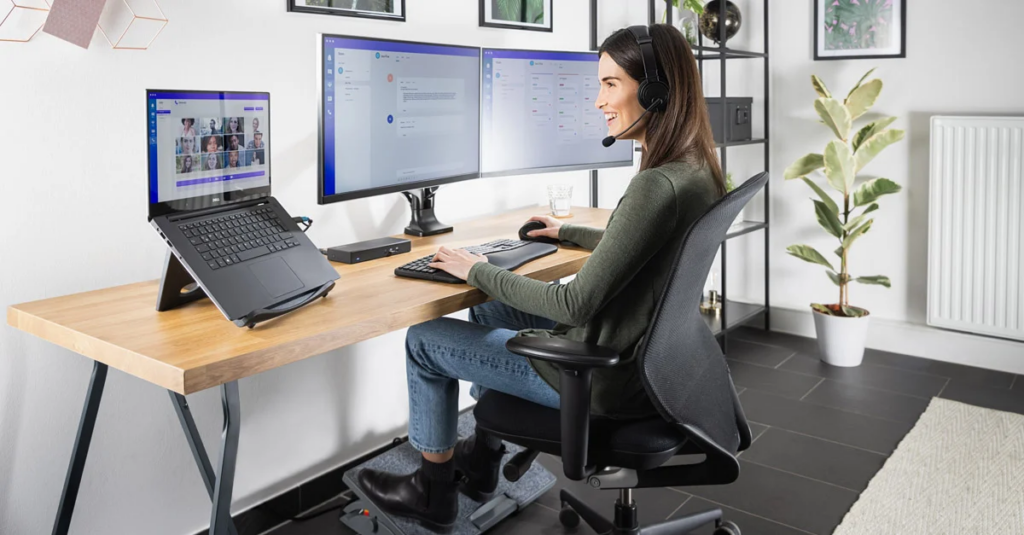
Specific Needs and Health Concerns
If you have existing health issues or specific physical concerns, your chair selection becomes even more critical. Different chair features can help address common problems:
Lower Back Pain
Affects an estimated 80% of adults at some point in their lives. Look for:
- Adjustable lumbar support with both height and depth adjustments
- Dynamic lumbar support that moves with you (like Herman Miller’s PostureFit SL)
- Proper seat depth to encourage sitting all the way back in the chair
- Forward tilt option for maintaining lumbar curve during task-intensive work
- Firm support rather than soft cushioning
Neck and Shoulder Pain
Common in desk workers who spend significant time looking at screens. Look for:
- Adjustable headrest that supports the natural curve of your neck
- Full-back design that supports your entire spine
- Adjustable armrests that properly support elbow and shoulder positioning
- High backrest that encourages proper upper back posture
- Options that encourage neutral head position relative to monitor
Hip Pain and Sciatica
Can be aggravated by poor sitting posture and inadequate seat design. Look for:
- Seat cushion with pressure-relieving properties
- Waterfall edge design that reduces pressure on thighs
- Adjustable seat tilt to find optimal hip positioning
- Open angle between seat and backrest to reduce hip flexion
- Proper weight distribution to prevent pressure points
Repetitive Strain Injuries
Including carpal tunnel syndrome and tendonitis. Look for:
- Fully adjustable armrests that support neutral wrist positions
- Smooth height adjustment to coordinate perfectly with desk height
- Chair mobility that reduces reaching and straining
- Proper overall ergonomics to address potential contributing factors from overall posture
Overall Considerations
No matter your specific health concern, these principles apply:
- Consult with a healthcare provider about your specific needs
- Prioritize adjustability to find your optimal configuration
- Consider chairs specifically designed for your condition
- Remember that no chair is a substitute for movement and position changes
- Invest in quality that will maintain its therapeutic properties over time
Also, if you intend to sit for prolonged periods of time, that is more than 2 hours, an ergonomic chair is highly recommended!

Key Adjustments
The adjustability of an ergonomic chair directly correlates with how well it can be customized to your specific body and needs. More adjustment options typically mean better ergonomic potential, though they can also mean a steeper learning curve and higher price. Here are the key adjustments to consider:
Essential Adjustments (Minimum Requirements)
- Seat Height: Pneumatic adjustment allowing your feet to rest flat on the floor with knees at 90°
- Backrest Recline: Ability to change the angle of the backrest relative to the seat
- Backrest Tension: Control over the resistance felt when leaning back
- Armrest Height: Vertical adjustment to support arms at a comfortable height
Advanced Adjustments (Better Customization)
- Seat Depth: Adjusting the front-to-back depth of the seat pan
- Lumbar Height: Raising or lowering the lumbar support to match your spine
- Lumbar Depth/Firmness: Adjusting how far forward the lumbar support protrudes
- Armrest Width: Moving armrests closer or further from your body
- Armrest Depth: Sliding armrests forward or backward
- Armrest Pivot: Rotating armrests to support different arm positions
Premium Adjustments (Maximum Ergonomic Potential)
- Forward Tilt: Ability to angle the seat slightly forward for task-intensive work
- Headrest Adjustability: Height and angle adjustments for neck support
- Back Height: Ability to raise or lower the entire backrest
- Seat Pan Angle: Changing the angle of the seat independent of the backrest
- Adjustable Thigh Support: Independent adjustment for each leg (rare feature)
Adjustment Quality Factors
- Ease of Use: Controls should be intuitive and accessible from a seated position
- Stability: Adjustments should stay firmly in place once set
- Range: Sufficient range to accommodate your specific body dimensions
- Independence: Ability to adjust one element without affecting others
- Durability: Adjustment mechanisms should maintain their function over years of use
Look for a chair with a good range of adjustments to customize the fit. These should include at minimum: Seat Height, Lumbar Support, Armrest Height/Width/Angle, and Tilt Tension and Limiter.

Durability and Warranty
An ergonomic chair is an investment, and you want to make sure that investment lasts. Durability and warranty are key indicators of a chair’s quality and the manufacturer’s confidence in their product.
What to Look For:
- Materials: High-quality materials like steel frames, durable mesh, and high-density foam will generally last longer than cheaper alternatives. Look at materials such as:
- Steel
- Aluminum
- Glass reinforced nylon/polyamide
- Construction: Look for chairs with robust construction and solid mechanisms. Read reviews to see if users report any issues with parts breaking or wearing out prematurely.
- Warranty Length: A longer warranty generally indicates a more durable product. Premium ergonomic chairs often come with warranties of 10-12 years (or even longer), covering all components. Budget chairs might only have a 1-year warranty, or no warranty at all.
- Warranty Coverage: Read the fine print of the warranty. What exactly does it cover? Does it cover all parts, or just some? Does it cover labor costs? Are there any exclusions? For example, Herman Miller offers a 12-year warranty that covers all parts and labor.
- Manufacturer Reputation: Established brands with a reputation for quality (like Herman Miller and Steelcase) are generally a safer bet than unknown brands.
Evaluating Long-Term Value
A truly valuable chair is one that maintains its performance and appearance over many years of use. Consider these real-world factors:
- Cost Amortization: A $1,200 chair that lasts 12 years costs $100/year or about $8.33/month—less than many streaming subscriptions for something you use 40+ hours weekly.
- Common Failure Points: Examine reviews for recurring issues, even in premium chairs. Pay attention to:
- Gas cylinders (for height adjustment)
- Armrest mechanisms
- Casters and base strength
- Mesh tension and stretching (in mesh chairs)
- Foam compression and resilience (in padded chairs)
- Repairability: Some manufacturers design chairs for easy component replacement, extending functional lifespan. Herman Miller and Steelcase chairs are known for modular designs that allow for part replacement rather than complete chair replacement.
Don’t underestimate the importance of a good warranty. It provides peace of mind and protects you from potential defects or premature wear and tear. A chair that lasts for 10+ years with a comprehensive warranty is a much better long-term value than a cheaper chair that needs to be replaced every few years.
Trial Period/Return Policy
No matter how thoroughly you research, the true test of a chair’s suitability comes from actually using it in your workspace. This is why trial periods and return policies are valuable components of your purchasing decision:
What to Look For:
- Length of Trial: Longer trials (30+ days) allow your body time to adjust and provide a true assessment of comfort and support.
- Return Process: Understand the specific steps required to initiate a return if the chair doesn’t work for you.
- Return Shipping: Who pays for return shipping? This can be a significant cost for large items like chairs.
- Restocking Fees: Some retailers charge 15-25% restocking fees that can substantially reduce your refund.
- Original Packaging Requirement: Some return policies require the original packaging, which can be cumbersome to store.
Online vs. In-Store Trial Differences:
- Online Retailers: Typically offer longer trial periods (30-100 days) to offset the inability to test before buying
- Brick-and-Mortar Stores: May offer shorter return windows but allow in-person testing before purchase
- Manufacturer Direct: Often provide the most generous policies but may have more specific return requirements
Making the Most of Your Trial:
- Adjust the chair properly from day one (follow manufacturer guidance)
- Use the chair for a variety of tasks to fully evaluate its versatility
- Pay attention to how your body feels at the end of a full workday
- Test with your specific desk setup and work environment
- Keep all packaging and documentation until you’re certain you’ll keep the chair
If possible, choose a chair with a trial period or a generous return policy. This allows you to test the chair in your own workspace and make sure it’s a good fit for you.

Our Top Ergonomic Chair Picks
We’ve reviewed a range of ergonomic chairs, from premium models to more affordable options. Each review focuses on the key features, benefits, potential drawbacks, and overall value proposition of the chair.

Herman Miller Aeron Review
The iconic ergonomic chair, known for its Pellicle suspension, extensive adjustability, and 12-year warranty. Is it still the best in 2025? Our in-depth review covers everything you need to know.
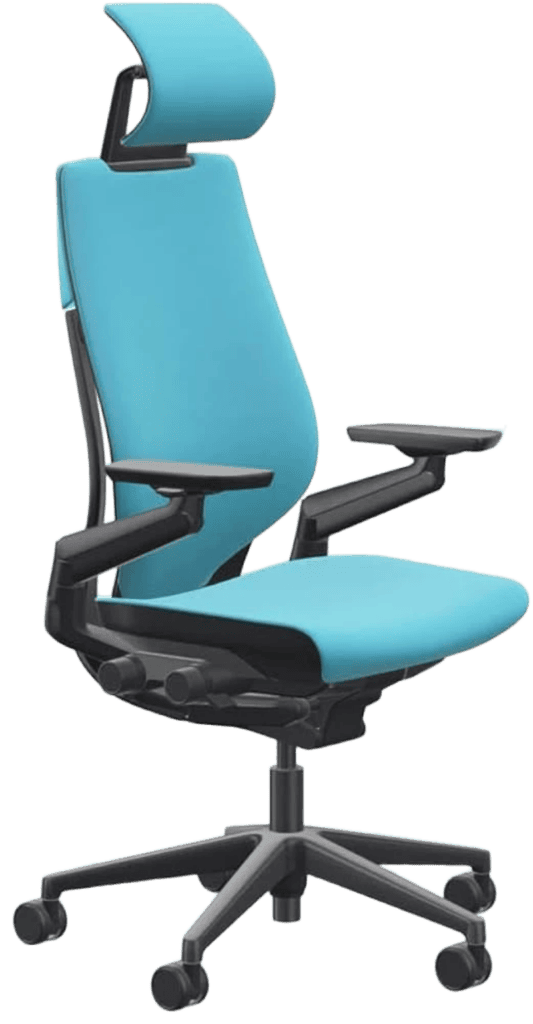
Steelcase Gesture Review
Designed for the modern workplace, the Steelcase Gesture offers unparalleled adaptability and support for a wide range of postures. Find out if it’s the right fit for your dynamic work style.
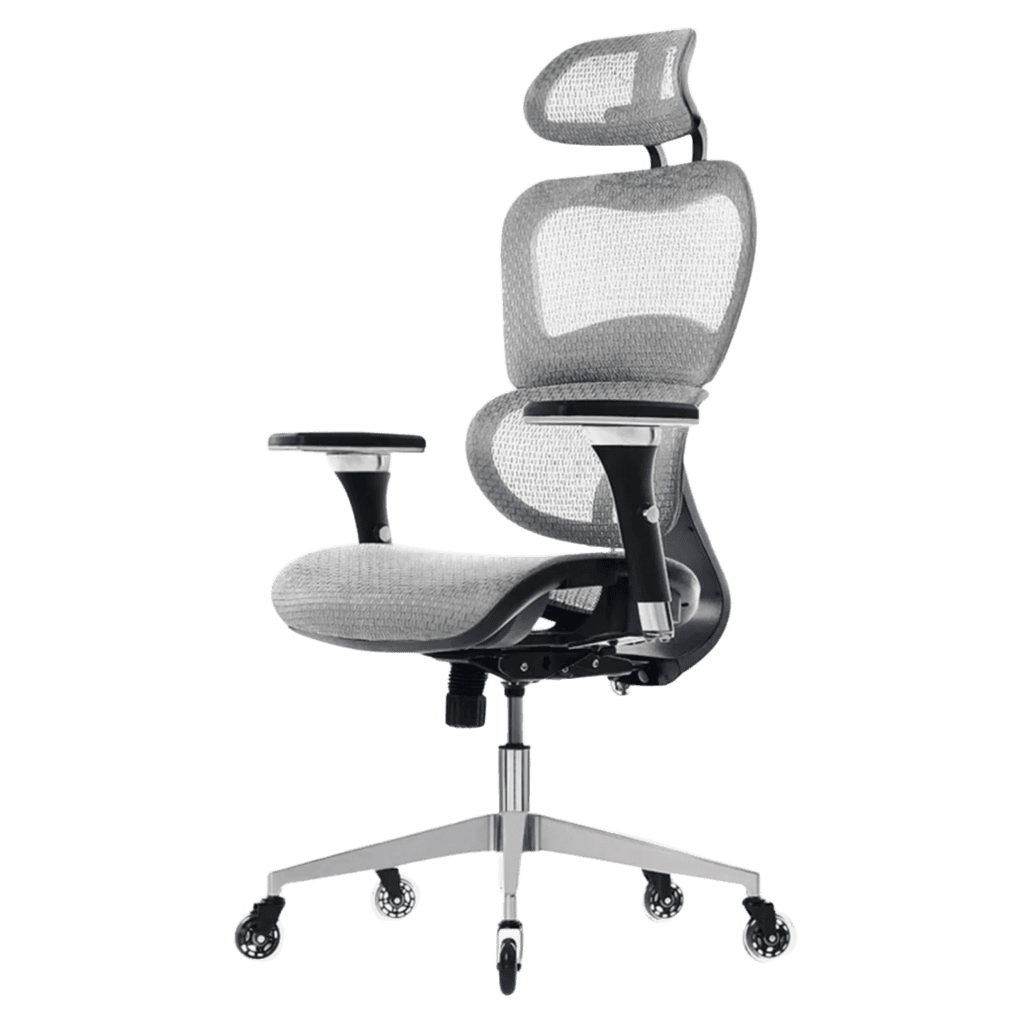
Oline ErgoPro Review
A feature-packed mid-range chair that offers a compelling alternative to premium models. Discover if the ErgoPro delivers on its promise of affordable ergonomics.
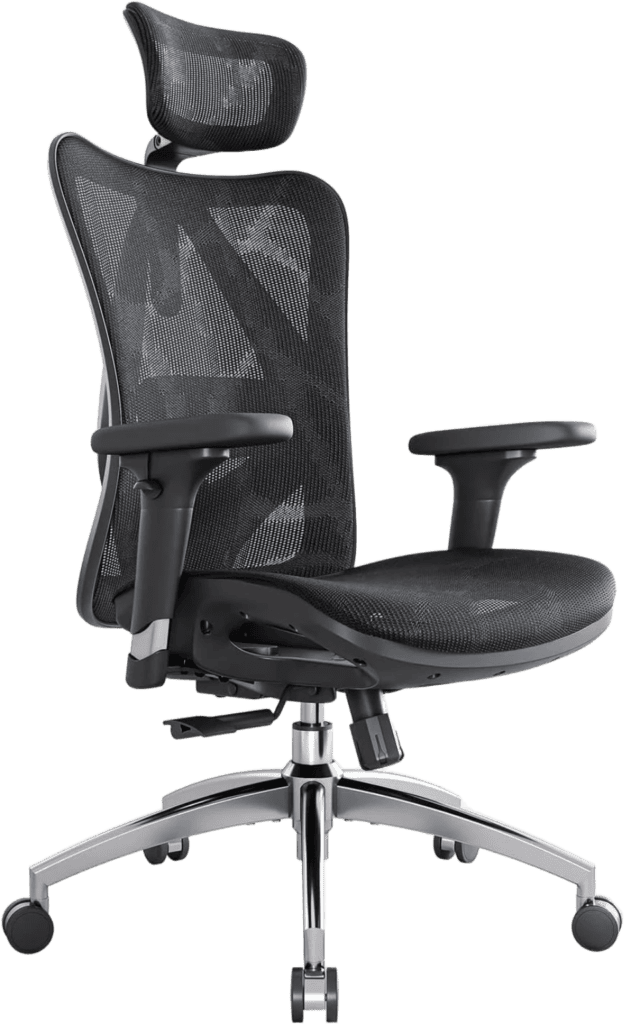
SIHOO Ergonomic Office Chair Review
Another mid-range contender, great for those who are looking for value for money.
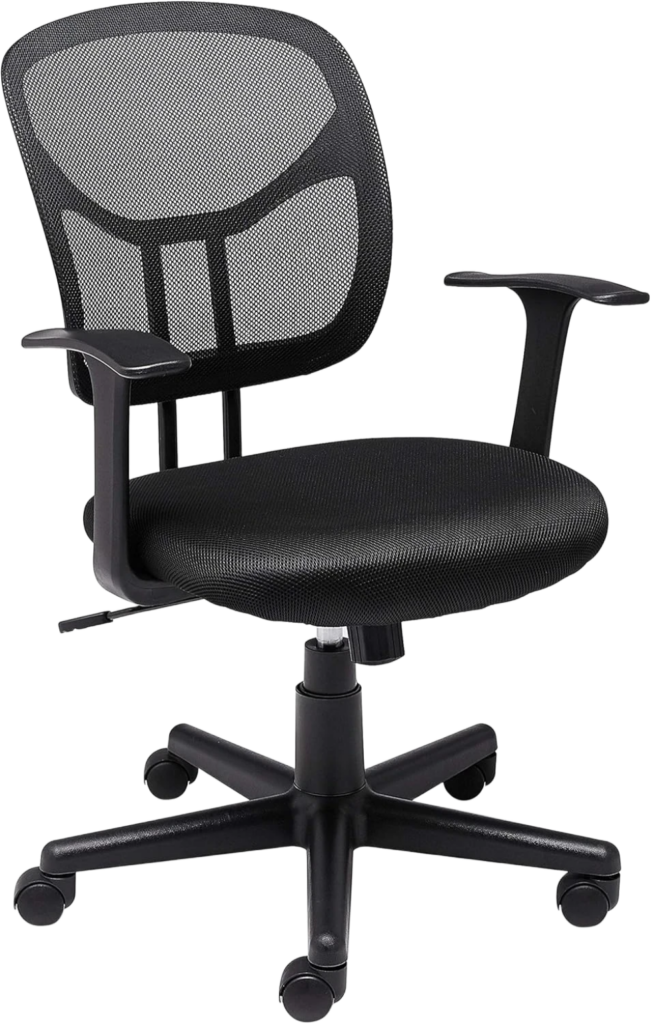
Amazon Basics Office Chair Review
A budget-friendly option for students and occasional use. Is it a worthwhile upgrade from a basic dining chair? We explore the pros and cons.
Get Exclusive Value Insights & Deals
Join our community of value-conscious shoppers and get our latest guides, exclusive deals on top-quality products, and insider tips for finding items truly worth investing in. We’re expanding soon to include even more high-value categories for your home and life!
We respect your privacy and will never share your information. Unsubscribe anytime.
Last Updated: December 16, 2025
- https://www.sciencedirect.com/science/article/abs/pii/S1529943023035428 ↩︎
